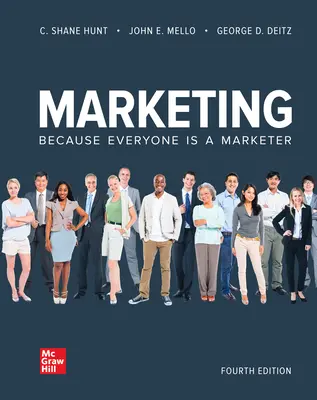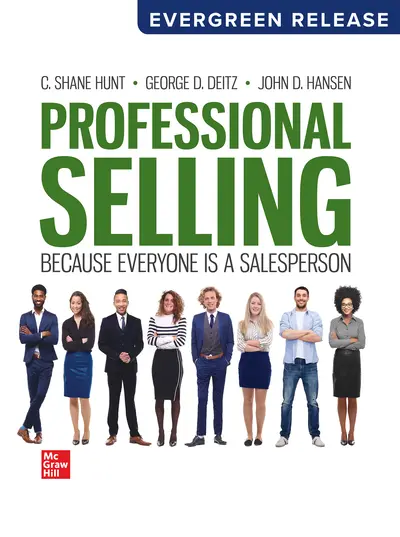Posted by admin on Mar 31, 2015
One of the most fascinating strategic marketing decisions over the past couple years has come from World Wrestling Entertainment (WWE). In early 2014, the WWE shifted part of their business model from being driven by monthly pay-per-view events (PPVs) (where fans paid between $45-$70 to watch each event live on their television) to launching a new digital channel called the WWE network available across numerous devices. For wrestling fans, it’s a good deal as for $9.99 a month, you get a live 24-hour-a-day network that features some original content, broadcasts of classic WWE matches, video on-demand access to the entire WWE, WCW, and ECW pay-per-view archive, plus live streams of all 12 WWE pay-per-views. This Netflix type monthly fee model that includes all (12) live PPVs for what it previously would have cost a fan to buy just (2) PPVs is a fascinating business decision that led some investors to wonder if the WWE Network revenue could make up for the lost pay-per-view revenue. WWE announced this week that the WWE Network, which launched in February 2014, had surpassed 1.3 million subscribers, thanks in large part to recent subscriber additions for last Sunday’s WrestleMania. Despite the boost in subscribers (WWE had just 1 million at the end of January), investors reacted negatively as the company said the figures could fall in the future following big events. WWE marketers have been aggressively using a variety of sales promotion strategies. For example, the boost in subscribers was aided by a free trial available in February, which added 201,000 trial subscribers, with 77% of them converting to paid subscribers in March. Sources: Chris Ciaccia, “WWE Gets Pummeled as Investors Fear Subscriber Numbers Will Erode,” thestreet.com, March 30, 2015. http://www.thestreet.com/story/13095125/1/wwe-gets-pummeled-as-investors-fear-subscriber-numbers-will-fall.html?puc=CNBC&cm_ven=CNBC Ben Sin, “The WWE’s New Digital Channel Could Kill The Business Model They Built,” Sports Illustrated, January 9, 2014. http://www.si.com/extra-mustard/2014/01/09/wwe-digital-channel-ppv Discussion Questions: 1. Do you agree with the WWE’s strategic marketing plan to shift revenues toward their digital network instead of traditional pay-per-views? 2. What sales promotion strategies would you suggest that the WWE use in the future to increase the number of network subscribers?...
Read More
Posted by admin on Mar 23, 2015
If you watched the NCAA Tournament this past weekend, you saw some great basketball and a variety of marketing strategies. Under Armour Inc., which has six schools wearing its shoes and jerseys in the NCAA tournament, is gaining traction and market share in basketball shoes. Basketball is one of the fastest-growing parts of the U.S. sporting goods industry. Sales surged 20 percent in 2014, about four times as fast as the overall athletic-shoe market Under Armour endorsers include several tournament teams such as No. 4 seed Maryland, and No. 3 seed Notre Dame, which in January 2014 signed the richest apparel deal in college sports history. Under Armour’s Notre Dame deal brings the school more than $90 million over 10 years, according to Fighting Irish Athletic Director Jack Swarbrick. Founded in 1996, Baltimore-based Under Armour outfits 32 basketball programs at the highest level of college play and the entire athletic departments of 15 schools. Last year, just one of its sponsored teams reached the tournament (Stephen F. Austin), while Nike had 40, including eventual champion Connecticut. This year Nike still has the most at 48, including undefeated Kentucky. Eleven schools will wear Adidas AG, and three squads will have jerseys from Berkshire Hathaway Inc.’s Russell Athletic, while wearing Nike shoes. Under Armour marketers got $1.9 million in television exposure from Stephen F. Austin’s two tournament games last year, according to sponsorship evaluation firm Front Row Analytics. The company’s six teams this year will bring at least $3.9 million in exposure, which increases throughout the six-round tournament. Source: Mason Levinson and Matt Townsend, “Under Armour is the NCAA Tournament’s Real Cinderella Story.” Bloomberg Businessweek, March 19, 2015. http://www.bloomberg.com/news/articles/2015-03-19/under-armour-is-the-ncaa-tournament-s-real-cinderella-story Discussion Questions: 1. Are investments like the $90 million Under Armour paid Notre Dame to wear its apparel, profitable marketing strategies? 2. Can you think of other effective product placement strategies in...
Read More
Posted by admin on Mar 6, 2015
One of the questions I get often from instructors using our book is how many Connect assignments should be used during a semester. I wrote (5) Connect exercises for each of the 14 chapters to give instructors maximum flexibility to choose from the (70) total Connect exercises built into the book, including one video case and one social media assignment in each chapter. The decision on how many of those (70) Connect exercises to assign can be based on a number of factors including teaching format (face-to-face, online, etc.), and time frame of the course (15 week semester, 5 week summer term, etc.). While there is no answer that is best for everyone, I wanted to share why I assign 19 Connect exercises each semester and then some things I have seen other instructors using our book have success with. My Principles of Marketing course is a Tuesday-Thursday class that meets twice a week over a 15 week semester. With those 30 class meetings, I subtracted 4 classes where we have exams, 4 where I have quizzes, 2 classes the first week when people are still adding and dropping, and 1 class when their projects are due. When I took those 11 out, I had 19 classes that I assign a Connect exercise at the end of each of those classes. These are usually split between assignments that reinforce what I covered in class that day, and assignments that “flip the classroom” to prepare students before the next class. I picked the Connect assignments that I thought had the biggest impact for students and/or the topics they most struggle with. I picked at least one in each of the 14 chapters with a few chapters having a second assignment. With 5 different Connect Assignments in each chapter to choose from, you can pick what you are most passionate about or what you think the students need the most practice on. Depending on student feedback and assessment metrics, I typically change some the assignments I select each semester once I see where my students are having the greatest challenges. I know instructors who adopted our book to teach in an online marketing class. These instructors are typically more concerned with keeping their online students engaged on a day to day basis. Some online instructors assign all (70) Connect exercises requiring students to average about one assignment per day during each...
Read More
Posted by admin on Mar 4, 2015
While Pizza Hut has successfully added more than 1,300 restaurants across China, its international expansion into Africa has been more difficult. The world’s largest pizza chain failed in sub-Saharan Africa seven years ago, after consumers were cool to its prices and dine-in model. This time around, Pizza Hut marketers are targeting takeout and delivery service. It will limit drop-off distances to a few miles, which means eventually it will have smaller stores in lots of neighborhoods. From its current eight stores in South Africa and Zambia, it aims to have 200 stores across the continent in three years. While fast-food purchases in South Africa are growing, much of that nation’s fast-food industry is homegrown. In countries such as Ghana, Kenya, and Nigeria, there’s less competition than in South Africa. So while supply chains are less reliable, those newer markets offer foreign restaurant players good growth opportunities. Almost half of Africa’s fast-food restaurants are focused on chicken with hamburgers being second. Pizza is a distant third, accounting for about 5 percent of total spending. A major reason for this is the more moderate cost and wider availability of poultry supplies. Some Pizza Hut toppings, such as air-dried pepperoni, have to be imported leading to higher prices for consumers. For example, the “Streetwise 5” meal from KFC, which includes a large order of fries and five pieces of chicken, costs $5.50 in South Africa, while a fully loaded large Pizza Hut pizza approaches $8. In Zambia, the same pizza costs about $10. To offer more affordable items, Pizza Hut has added fries to its menu in South Africa. Chicken wings and breadsticks are also options. Source: Janice Kew and Christopher Spillane, “Pizza Hut returns to Africa” Bloomberg Businessweek, February 19, 2015 http://www.bloomberg.com/news/articles/2015-02-19/pizza-hut-returns-to-africa-with-new-strategy 1. How should Pizza Hut position their products to overcome the higher prices they are charging consumers? 2. Are there things that Pizza Hut could do to improve their supply chain in Africa and reduce...
Read More
Posted by admin on Feb 18, 2015
Kate Spade, a leading designer-inspired company, dreamed of following the path of other aspirational lifestyle brandswhich are able to book huge sales at premium prices for everything from clothing to furniture to dinnerware. While company sales at Kate Spade were up more than 40 percent in 2014, Kate Spade is learning that creating a buzzy lifestyle brand is more difficult than it seems. Kate Spade announced the closing of all 19 of its neon-yellow Kate Spade Saturday stores which featured a sassier, cheaper alternative to Kate Spade New York. At about half the price of its grown-up sister brand, merchandise was meant to introduce younger women to the Kate Spade lifestyle. The extension proved to be a bridge too far. Clothes designed with a fun vibe for a professional woman in her 20s didn’t pair with Kate Spade’s designer feel. The stores were mostly filled with clothing, though the brand is best known for handbags and leather goods. Ultimately, Kate Spade Saturday had a hard time finding its identity. Source: Kim Bhasin, “For Kate Spade, a Move Downmarket goes Bust.” Bloomberg Businessweek, February 5, 2015 http://www.bloomberg.com/news/articles/2015-02-05/for-kate-spade-a-move-downmarket-goes-bust Discussion Question: 1. Is this brand extension problem unique to fashion, or do you think it is common across different types of products (cars, restaurants, etc.)? 2. Are their luxury brands that you think could successfully extend into lower priced products without hurting the overall...
Read More





